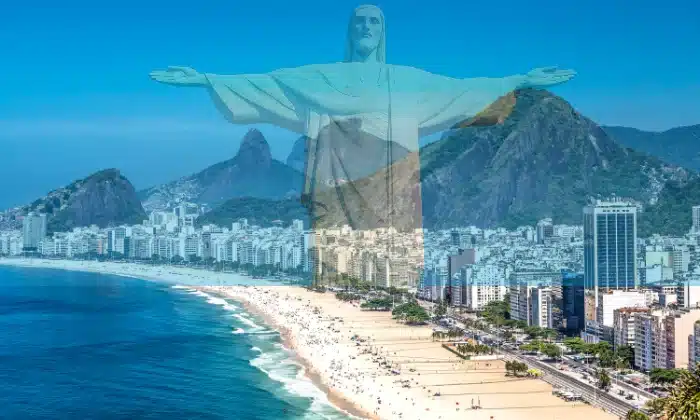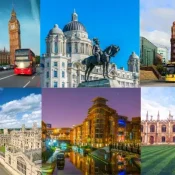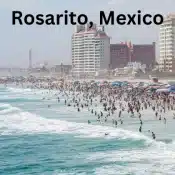
Best time to travel to Brazil
Best time to travel to Brazil. A Comprehensive Study of Itinerary and Destinations
Discover the ultimate guide to exploring Brazil with our comprehensive study of itineraries and destinations. Dive into Brazil uncovered, and plan your perfect trip today!
Introduction
Brazil is a land of vibrant culture, stunning landscapes, and captivating history. From the bustling streets of Rio de Janeiro to the tranquil rainforests of the Amazon, Brazil offers a diverse array of experiences for travelers. In this comprehensive study, we uncover the best itineraries and destinations in Brazil, ensuring you can make the most of your visit. Whether you’re seeking adventure, relaxation, or cultural immersion, our guide to Brazil will help you plan an unforgettable journey.
Choosing the best time to visit Brazil largely depends on the regions you plan to explore and the activities you want to enjoy.
Weather Overview
| Region | Best Time to Visit | Key Features |
| Rio de Janeiro | December to March | Summer season, great for beaches |
| Amazon Rainforest | June to September | Dry season, ideal for wildlife spotting |
| Pantanal | July to October | Dry season, best time for wildlife viewing |
| São Paulo | April to October | Mild weather, fewer tourists |
| Salvador | September to March | Warm weather, vibrant cultural festivals |
Key Considerations
- Carnival Season: February or March, depending on the year. This is a vibrant but crowded time to visit major cities like Rio de Janeiro and Salvador.
- Rainy Season: November to March can be particularly wet in the Amazon and Pantanal regions.
Best places to travel to Brazil
Rio de Janeiro
Rio de Janeiro is arguably Brazil’s most iconic city, known for its stunning beaches, lively Carnival, and the impressive Christ the Redeemer statue.
Highlights
- Copacabana and Ipanema Beaches: Perfect for sunbathing, swimming, and enjoying the vibrant beach culture.
- Christ the Redeemer: One of the New Seven Wonders of the World, offering breathtaking views of the city.
- Sugarloaf Mountain: Another vantage point providing panoramic views of Rio.
São Paulo
As Brazil’s largest city, São Paulo is a bustling metropolis known for its cultural diversity and vibrant arts scene.
Highlights
- Avenida Paulista: The heart of São Paulo’s financial district, lined with museums, shopping centers, and restaurants.
- Ibirapuera Park: A sprawling urban park, ideal for relaxation and outdoor activities.
- São Paulo Museum of Art (MASP): Renowned for its impressive collection of Western art.
Salvador
Salvador is the capital of Bahia state and is famous for its Afro-Brazilian culture, historic architecture, and lively festivals.
Highlights
- Pelourinho: The historic center, known for its colonial buildings and vibrant music scene.
- Elevador Lacerda: Offers stunning views of the city and the Bay of All Saints.
- Carnival: Salvador’s Carnival is one of the largest and most exuberant in the world.
Amazon Rainforest
The Amazon Rainforest is a must-visit for nature lovers, offering an unparalleled opportunity to explore one of the world’s most biodiverse regions.
Highlights
- Manaus: The gateway to the Amazon, offering river cruises and jungle lodges.
- Meeting of Waters: Where the dark Rio Negro meets the sandy-colored Amazon River.
- Wildlife Tours: Spotting exotic animals like jaguars, pink river dolphins, and a myriad of bird species.
Pantanal
The Pantanal is the world’s largest tropical wetland and a paradise for wildlife enthusiasts.
Highlights
- Wildlife Safaris: Known for its high concentration of wildlife, including jaguars, capybaras, and caimans.
- Boat Tours: Explore the waterways to see aquatic animals and birds.
- Eco-Lodges: Stay in remote lodges that offer immersive experiences in nature.
Sample Itineraries
One Week in Brazil
For a quick but fulfilling visit, focus on one or two major destinations.
Day 1-3: Rio de Janeiro
- Explore the beaches, visit Christ the Redeemer, and take a cable car to Sugarloaf Mountain.
Day 4-7: Salvador
- Discover the historic Pelourinho district, enjoy the local cuisine, and experience the vibrant nightlife.
Two Weeks in Brazil
With two weeks, you can cover more ground and dive deeper into Brazil’s diverse landscapes.
Day 1-4: Rio de Janeiro
- Include a visit to the Tijuca Forest and a day trip to the picturesque town of Paraty.
Day 5-8: São Paulo
- Visit cultural sites, enjoy the gastronomic scene, and take a day trip to the coastal town of Santos.
Day 9-14: Amazon Rainforest
- Spend several days exploring the rainforest from Manaus, including river cruises and wildlife tours.
Three Weeks in Brazil
Three weeks allows for an in-depth exploration of multiple regions.
Day 1-4: Rio de Janeiro
- Cover all major attractions and consider a visit to Ilha Grande for pristine beaches and hiking.
Day 5-8: São Paulo
- In addition to city attractions, visit nearby cultural hubs like Campinas.
Day 9-12: Salvador
- Immerse in the local culture, and visit nearby beach towns like Praia do Forte.
Day 13-16: Amazon Rainforest
- Extended stay in jungle lodges, deeper exploration of wildlife.
Day 17-21: Pantanal
- End the trip with a wildlife safari in the Pantanal, focusing on the diverse fauna of the region.
Travel tips for a trip to Brazil
- Safety: While Brazil is generally safe for tourists, be cautious of petty crime in major cities.
- Language: Portuguese is the official language. Learning basic phrases can be very helpful.
- Currency: The Brazilian Real (BRL) is the official currency. Credit cards are widely accepted, but carrying some cash is advisable for smaller towns.
- Health: Consult with a healthcare provider about vaccinations, especially if visiting the Amazon.
FAQs
What is the best way to travel between cities in Brazil?
Domestic flights are the fastest and most convenient way to travel between major cities. Brazil has an extensive network of airports and several domestic airlines.
Is Brazil safe for solo travelers?
Yes, but it’s important to stay vigilant, especially in crowded areas. Stick to well-lit streets and avoid displaying valuable items.
Can I drink tap water in Brazil?
It’s advisable to drink bottled or filtered water, as tap water may not be safe for tourists.
What is the currency exchange rate in Brazil?
Exchange rates fluctuate, so it’s best to check current rates before your trip. Major cities have numerous exchange bureaus.
How do I get around within cities?
Public transportation, such as buses and metro systems, is available in major cities. Taxis and ride-sharing services like Uber are also widely used.
Conclusion
Brazil is a country of remarkable diversity, offering a wealth of experiences for travelers. From the iconic beaches of Rio de Janeiro to the dense jungles of the Amazon, Brazil uncovered is a journey through some of the world’s most captivating destinations. Whether you’re planning a short getaway or an extended adventure, our comprehensive study of itineraries and destinations will help you make the most of your Brazilian adventure.




